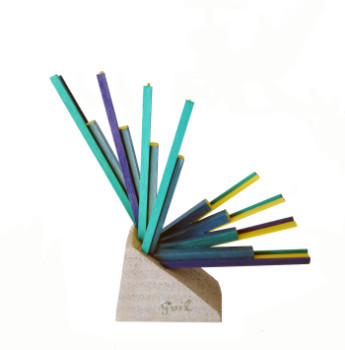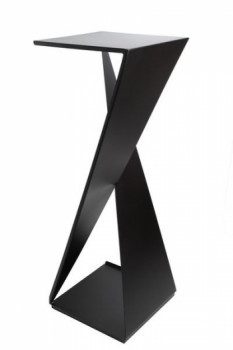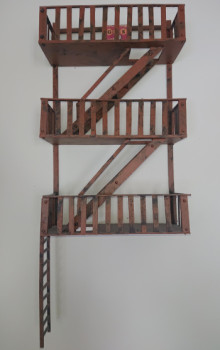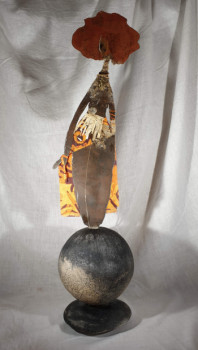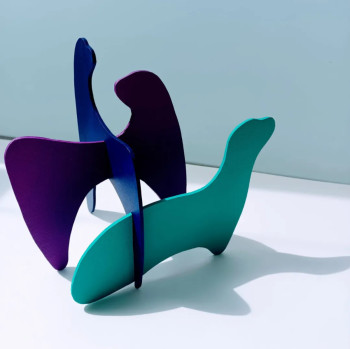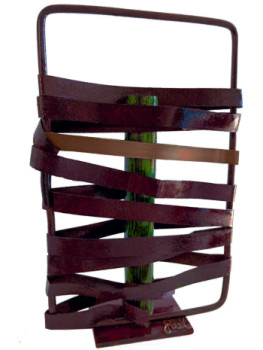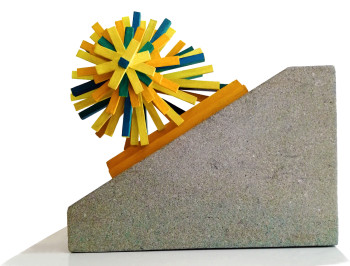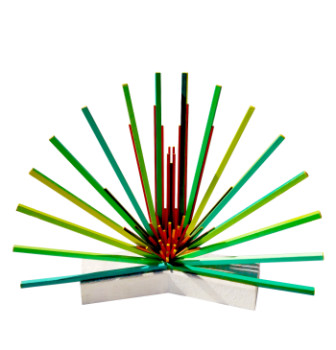
Understanding Calder and his mobile art

When some artists strive to respect all codes, others strive to respect all codes. manage and manage to create an innovative approach, a revolutionary concept, an unprecedented trend. Alexander Calder started from a simple observation: Why art should it be static? By going against all the conventions of its time, the sculptor left his mark on the history of art.
The sculptor's childhood
Pennsylvania saw the birth of Alexander Calder during the year 1898. This newborn was surrounded, from his arrival in this world, by a loving family, but above all, a family of artists. He is therefore awake; a wide variety of artistic disciplines and develops a sensitivity to increased towards the world around him. However, at the start, the young Calder rather demonstrates a devouring passion for the intrinsic functioning of the objects that surround him. Very early on, he spent his free time outdoors. making increasingly complex things and devotes himself exclusively to mechanics, a field which also relates to creation, in certain aspects.
Engineering before art
Bringing life to life Metal or electronic assemblies turn out to be a gift. With such a predisposition, Alexander then turned to targeted studies at the Stevens Institute of Technology. At the end of 1919, the young Calder received a diploma in Mechanical Engineering. It was then as a mechanical engineer that Alexander entered working life.
Calder, pioneer in the world of mobile sculpture
Working in engineering is stimulating and promising for the young man. However, it is very difficult to deny one's roots and Alexander Calder experienced this at the beginning of his adult life. His job satisfies him, but a little something is missing to make his daily life truly exhilarating. This little something is art. Calder turns to new towards this field which has rocked his first years. He created his first sculptures. Over the years, his experience as an engineer has enhanced his work. He creates increasingly complex structures, but above all not fixed, in parallel with his studies in drawing and painting. He appropriates the space. Calder develops this concept of mobility in art and became the founder of a new movement: mobile sculpture. kinetic art had just seen the light of day.
The artist who chooses to draw in space
Before 1929, for ordinary mortals, the drawing could only come to life on a sheet of paper or a canvas. However, following an exhibition of the artist sculptor, a newspaper mentions for the very first time the term "drawing in space". This expression so admirably illustrates the work of the sculptor that it will be taken up by everyone and commonly accepted. During this exhibition, Calder exhibits pure sculptures, made of simple iron wires. The latter are responsible for this optical illusion evoking a drawing, or a portrait, suspended in the air.
1930, Calder and Mondrian
As is often the case, when an artist begins to make his mark; to make people talk about him, an invitation was sent to the sculptor. Mondrian wishes to introduce his workshop to Alexander Calder. The invitation was obviously accepted. During this first meeting, Calder notices a sculpture by Mondrian, composed of several square shapes, enhanced with bright and varied colors. Alexander remains as if hypnotized; by the light piercing these structures and enhancing each of these hues. Humbly, he proposes to put the whole work in motion, with the aim of giving it much more character and power. Mondrian refuses to allow his work to be modified, deeming it perfect as is. For him, painting is enough; offer depth to his sculpture. However, the idea did not leave the artist's mind. The latter then begins research on his side. This new approach begins at take more and more space in its projects. Little to nothing Little by little, his sculptures become abstract and extremely colorful.
The impact of the war on his work
Artists, like the rest of the world, were greatly impacted by the Second World War. The shortage of metal then proved detrimental to the work begun by Calder during the previous years. You should know that the artist then uses pieces of metal canvas, cut by him, to design his mobiles. What about that doesn't matter, that's it! an opportunity for Calder to renew himself. Sometimes, the paths followed by artists are imposed on them by violence, as was the case for Calder. As an artist worthy of the name, he succeeded in transform these new constraints into something magnificent. Devoid of metal, Alexander Calder turns to wood and different, much more natural materials. This change marks the beginning of a new era of creation. The 1940s were the privileged witness to of a resoundingly successful collection: "Constellations".
The circus, a true obsession for the sculptor
Alexander spends his entire life, fascinated by by the notion of movement. This concept is omnipresent in each of his creations, whether through sculpture, drawing or peinture. As soon as he has the opportunity, he attends numerous shows, particularly circus ones, and is quick to transcribe what he sees via his drawings, sketches and paintings. Based on this in-depth research, Calder designed a miniature circus, made entirely of:
- wire,
- small wooden elements.
With these two materials, he creates acrobats, riders, clowns and even weightlifters. The decor is intended to be the mirror of reality. and it is within this miniaturized environment that that it sets each element in motion. Calder is able to give an entertaining and fascinating performance. This work was baptized "A little circus at home" by a circus critic, having attended the show. at the show.
His emblematic works
Mostly, Alexander spends his life at home. create sculptures of modest size, which can easily decorate an interior, at any time. the image of his circus. Nevertheless, As his talent and fame grow, the artist is brought into the spotlight. design giant sculptures. Some are still part of Calder's best-known works:
- Spiral, 1958,
- Male, 1967,
- Flamingo, 1974,
- The Spider, 1976.
Découvrez quelques oeuvres inspirées de Calder
